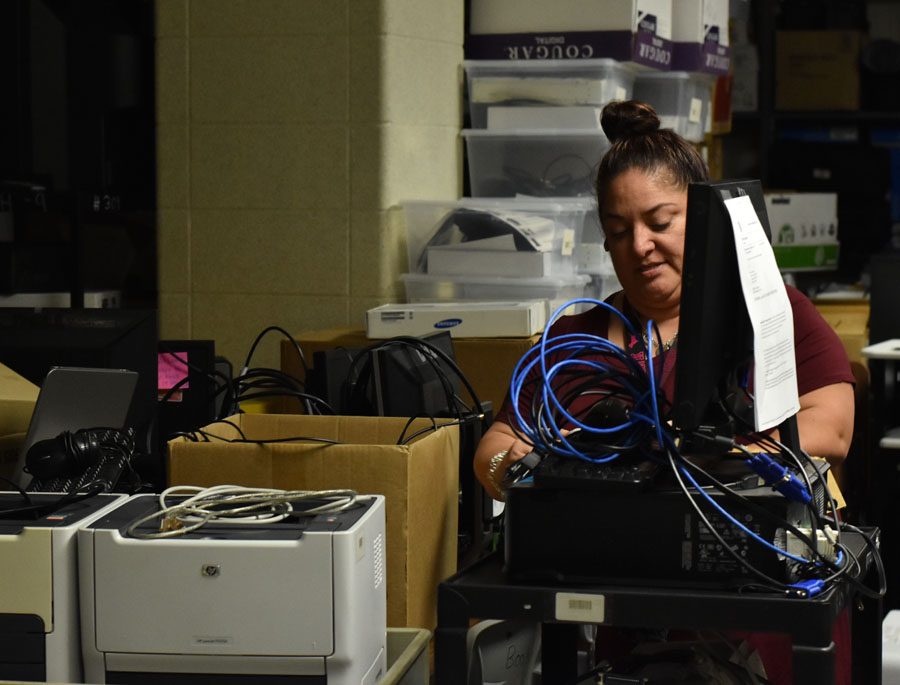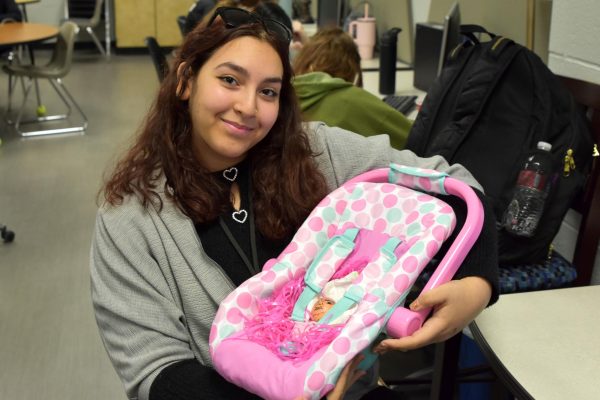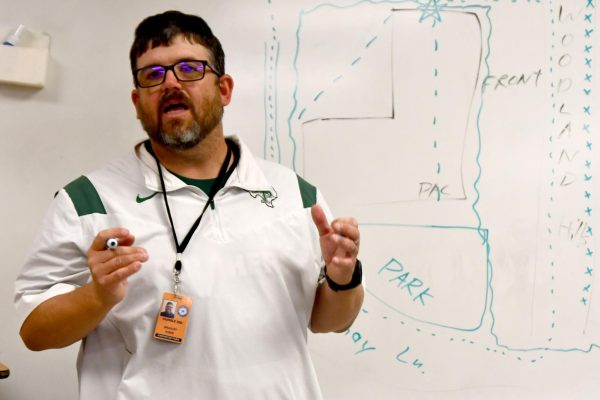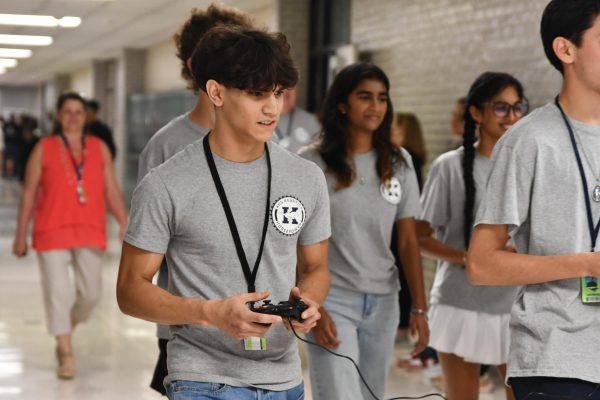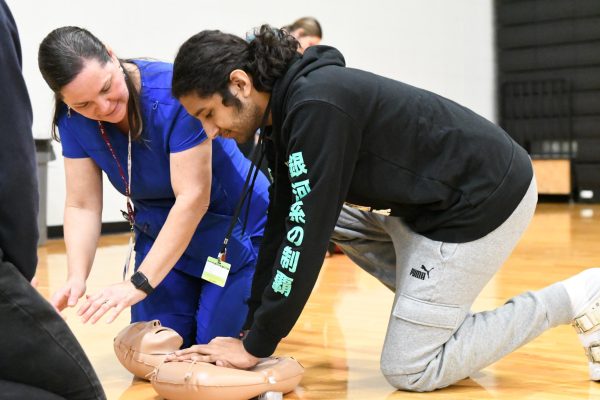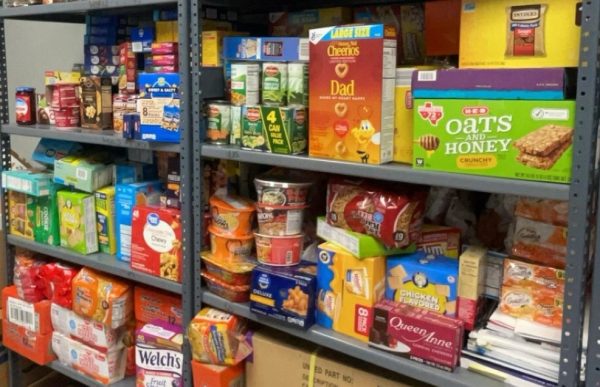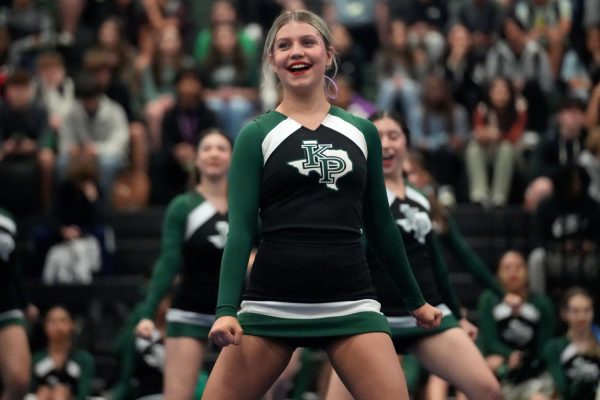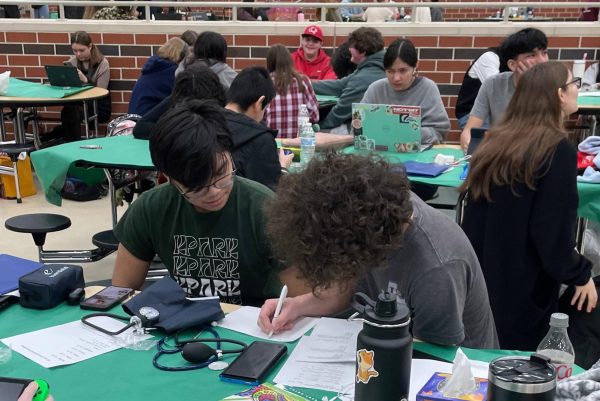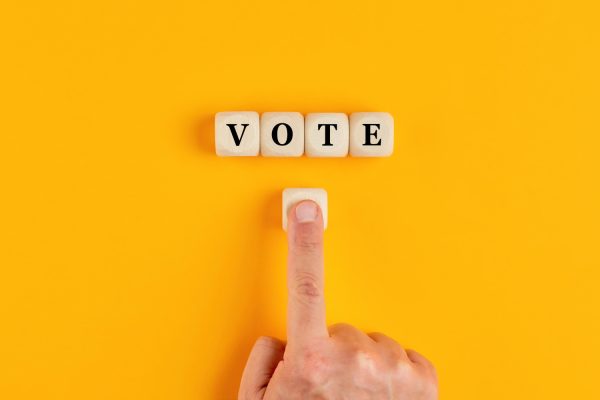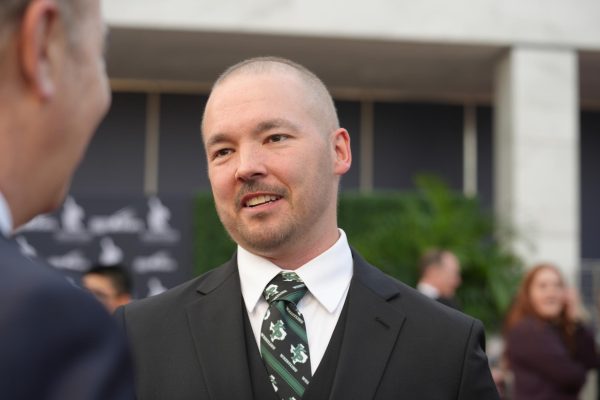Snapchat likely to be blocked on school Wi-Fi for good
K-Park IT head Myriam Vargas moves a cart with a broken computer monitor on it in the technology storage room.
March 10, 2017
Snapchat became unavailable on the school wifi on Jan. 25th, but was only gone for about a week and a half. However, it is most likely that it will soon leave and never return again. It was originally blocked by accident due to upgrades in the district firewall that affected many web services. However, the Humble ISD administration are currently in discussion of whether to decisively block Snapchat. Dustin Hardin, Humble ISD’s Executive Director of Technologies, said that they will most likely decide to block the app for good.
“Multiple people in administration feel that [Snapchat] does not have any educational relevance, so why should it be allowed? Others feel it allows for inappropriate behavior due to [its] nature… So currently there has not been a decision made but it is being discussed, and honestly it appears to be leaning towards blocking it again,” he said.
Snapchat’s inaccessibility did not just affect K-Park. All of Humble ISD campuses could not use Snapchat on school Wifi during that time. One of K-Park’s campus IT heads Myriam Vargas said that changes are made to the district wifi settings all throughout the year, and that students knew Snapchat had been blocked before she did.
“There’s changes made [to the school’s wifi] all the time for various reasons throughout the school year, throughout the summer… that would have happened through the network administrators in the district,” Vargas said of the block on Snapchat.
Humble ISD does not have a specific rule against using social media at school. Instead, they chose which websites to prohibit based on the accessibility of inappropriate content on those platforms.
“The only thing the district officially has a policy on is CIPA which is the federal law stating we have to block adult and inappropriate content,” Hardin said.
So, the goal of Humble ISD’s firewall is not to block student communications, but to ensure that inappropriate content cannot be viewed at school. However, Hardin said it is hard to determine what to block due to the fact that all kinds of content can be shared on social media. This is the reason why some school districts block all social media, as it has the possibility to contain adult content.
Humble ISD has no such policy, but still maintains the power to block websites that students use in a way that goes against the districts Responsible Use Guidelines, which describes how the internet is to be used for educational purposes, cannot be used for harassment or bullying, and cannot be used for anything illegal, among other rules.
However, when Snapchat returned to the school wifi, many say that it wasn’t that big of a deal as they’d been able to access it all along. According to student’s, use of VPNs to access Snapchat on school wifi was widespread in the time it was banned. VPNs, which stands for Virtual Private Network, can be used to access blocked web pages on a wifi network. There are a multitude of apps that can provide this service to students on their phones.
Yet when asked about student VPN usage, Dustin Hardin, Executive Director of Technology Services at Humble ISD, said plainly “we have a firewall that should be preventing all unauthorized VPN usage.”
However, student reports of VPN usage are to be believed effective, and the firewall ineffective in this instance.


